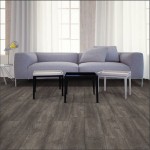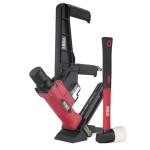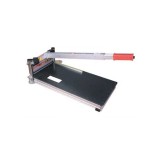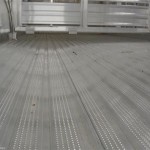Moisture Barrier for Laminate Flooring: Your Ultimate Guide
Laminate flooring is known for its durability and ease of maintenance, but it's not immune to moisture damage. A proper moisture barrier is essential to protect your laminate flooring from warping, buckling, and other issues that can be costly to repair. Here's a comprehensive guide to help you understand the importance and installation of a moisture barrier for laminate flooring.
Why is a Moisture Barrier Important?
Moisture can penetrate laminate flooring through seams, edges, or even from the subfloor. Over time, this moisture can cause the planks to swell, warp, or buckle. A moisture barrier creates a physical barrier between the flooring and the moisture source, preventing it from damaging the laminate.
Types of Moisture Barriers
There are two main types of moisture barriers available for laminate flooring:
- Underlayment: Underlayment is installed directly under the laminate flooring and serves as a cushion as well as a moisture barrier. It is usually made of materials like foam, cork, or plastic.
- Vapor Barrier: A vapor barrier is a thin sheet of plastic, foil, or rubber that is placed between the subfloor and the underlayment. It prevents moisture vapor from rising through the subfloor and damaging the flooring.
Installation Guidelines
Installing a moisture barrier for laminate flooring is crucial for its long-term performance. Follow these guidelines for a successful installation:
- Prepare the Subfloor: Ensure the subfloor is clean, level, and dry. Any unevenness or moisture can affect the effectiveness of the moisture barrier.
- Install Vapor Barrier: If using a vapor barrier, lay it over the subfloor with all seams taped together. Overlap the edges by at least 6 inches to prevent any gaps.
- Install Underlayment: Roll out the underlayment over the vapor barrier (if used) or directly over the subfloor. Stagger the seams and use tape or adhesive to secure them.
- Cut and Fit Laminate Flooring: Measure and cut the laminate flooring planks to fit the room. Leave a small expansion gap around the edges to allow for movement.
- Install Laminate Flooring: Lock the planks together according to the manufacturer's instructions. Ensure the joints are tight and secure.
Maintenance
Regular maintenance is essential to ensure the longevity of your moisture barrier and laminate flooring:
- Clean Regularly: Use a microfiber mop or vacuum cleaner to remove dust and dirt from the flooring. Avoid using harsh chemicals or excessive water.
- Inspect for Leaks: Regularly check your plumbing fixtures, appliances, and roof for any signs of leaks. If you detect a leak, repair it promptly.
- Control Humidity: Use a dehumidifier in humid environments to prevent moisture buildup that can damage the flooring.
By understanding the importance and installation techniques of a moisture barrier for laminate flooring, you can protect your investment and enjoy a beautiful and durable floor covering for years to come.

What Is A Moisture Barrier And When It Needed For Flooring Inc

Quietwalk 100 Sq Ft 3 X 33 Mm Underlayment With Sound And Moisture Barrier For Laminate Engineered Floors Qw100b1lt The Home Depot

What Is A Moisture Barrier And When It Needed For Flooring Inc

Quietwalk 100 Sq Ft 3 X 33 Mm Underlayment With Sound And Moisture Barrier For Laminate Engineered Floors Qw100b1lt The Home Depot

How To Install The Moisture Barrier Over Concrete Subfloor
Underlayment Wood Laminate Flooring Subfloor Floor Decor

Vapor Barrier Under Laminate Floor And Floating Problems

Underlayment Buyer S Guide

Underlay Supreme With Moisture Barrier Ewa2

Quietwalk Underlayment For Laminate And Floating Flooring Go Floors
Related Posts








